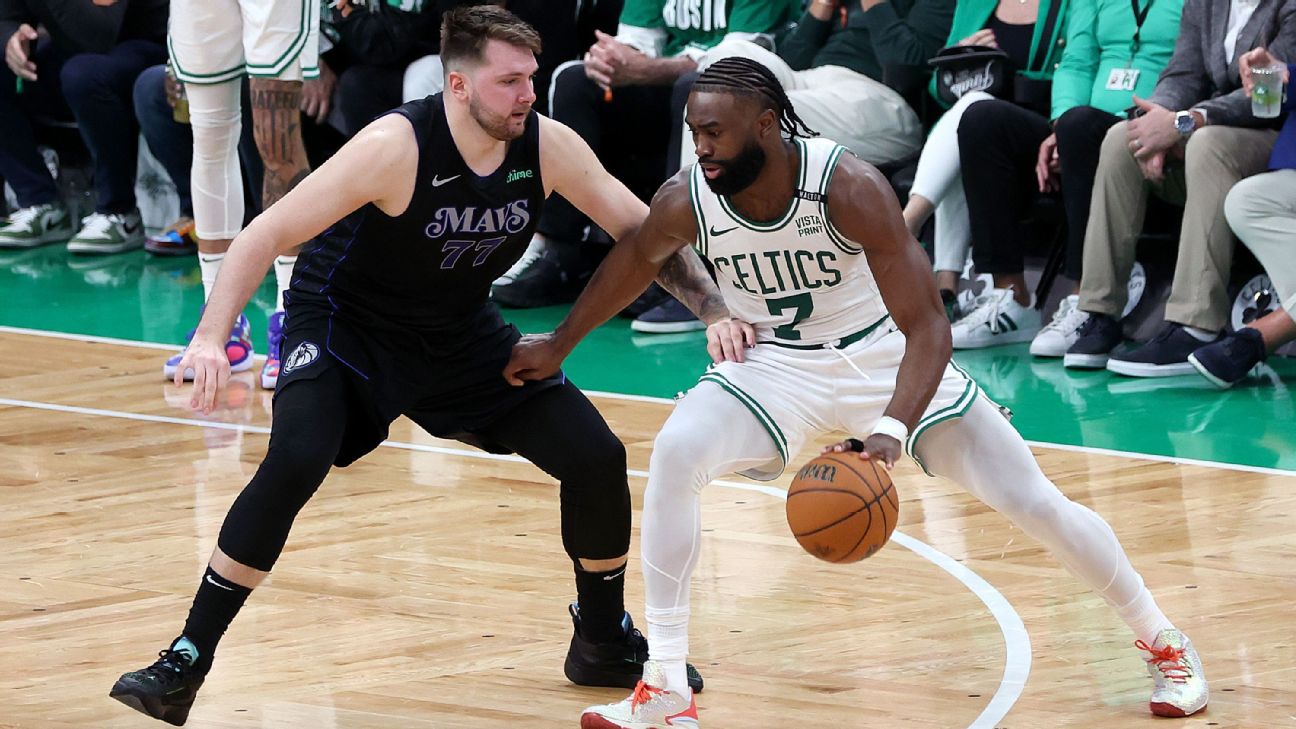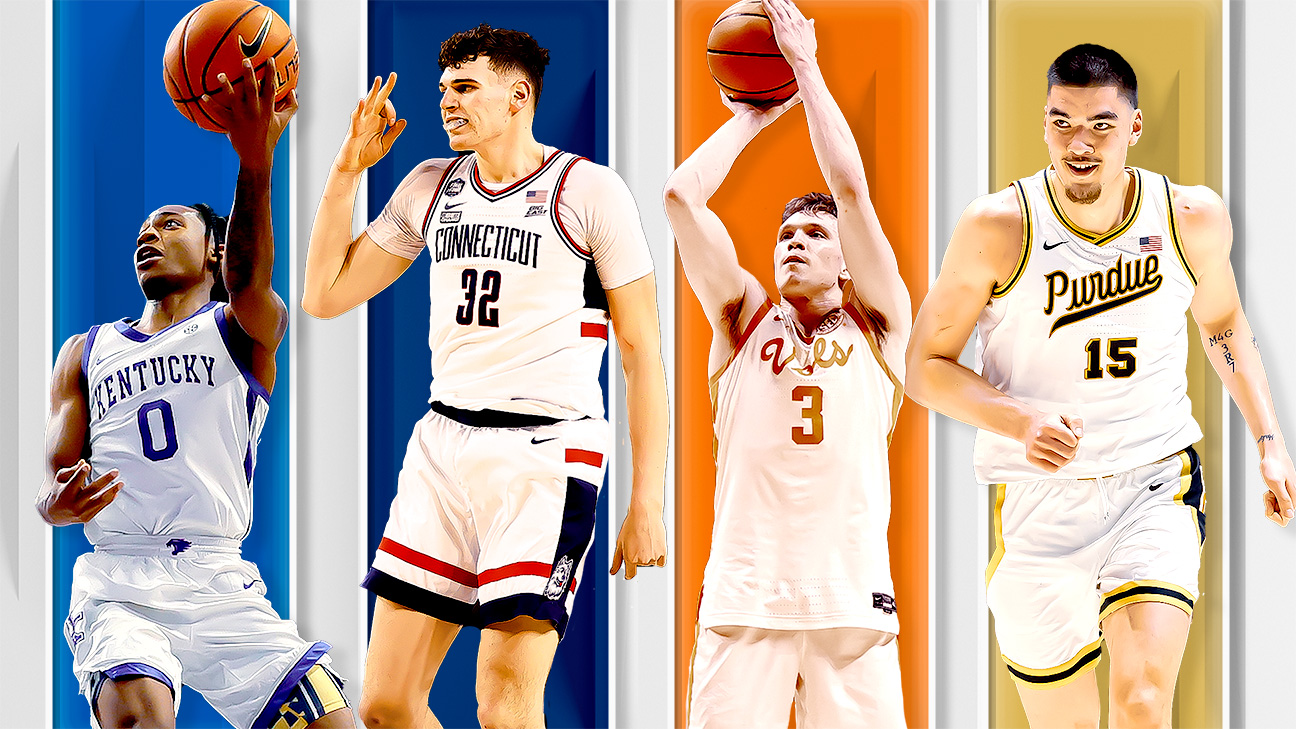On Thursday, Kansas Metropolis Chiefs defensive finish BJ Thompson suffered a seizure after which went into cardiac arrest on the workforce’s observe facility. Thompson, 25, was transported to a hospital by ambulance and was reported to be in steady situation. The Chiefs despatched house gamers and rescheduled their offseason observe.
It’s one in every of a number of current heart-related occasions involving notable athletes.
In December 2023, Luton City captain Tom Lockyer suffered cardiac arrest on the pitch throughout his workforce’s match at Bournemouth. On July 24, 2023, then-18-year-old USC freshman guard Bronny James — son of Los Angeles Lakers star LeBron James — suffered cardiac arrest throughout a exercise at USC. In January 2023, Buffalo Payments security Damar Hamlin, then 24, suffered cardiac arrest throughout a recreation in opposition to the Cincinnati Bengals. In June 2022, then-incoming USC freshman middle Vince Iwuchukwu, then 19, suffered cardiac arrest throughout a exercise. In June 2021, Danish midfielder Christian Eriksen, then 29, suffered cardiac arrest on the pitch throughout a Euro 2020 match.
In all six situations, the athletes obtained quick care from skilled specialists and survived. In Could, Lockyer, who had a defibrillator fitted after his December incident, mentioned he hopes to return to the pitch however that he is “at peace” with the prospect of retirement, too. James, Hamlin, Iwuchukwu and Eriksen have all been cleared to return to play — and, on Dec. 10, 2023, James made his season debut for USC in an 84-79 additional time loss in opposition to Lengthy Seashore State, scoring 4 factors in 17 minutes of motion off the bench.
Every state of affairs drew worldwide headlines and raised questions in and across the sports activities and medical communities about coronary heart points amongst younger, seemingly wholesome athletes. Research have been commissioned by main specialists, and cardiologists across the nation have tried to deal with involved mother and father, particularly within the period of conspiracy theories and misinformation.
Right this moment, after a yearslong pandemic and several other rounds of recent vaccines and boosters, cardiologists commonly face questions on how COVID-19 and its vaccines affect coronary heart well being.
“We’re not seeing a sign that pre-COVID and post-COVID [cardiac] occasions are any totally different,” mentioned Dr. Matthew Martinez, director of the sports activities cardiology and hypertrophic cardiomyopathy middle at Morristown Medical Middle in New Jersey, and a consulting heart specialist for the Nationwide Basketball Gamers Affiliation.
“What we’re seeing, nevertheless, is that extra individuals are being evaluated because of COVID. So we’re making the analysis of underlying congenital coronary heart illness in those that have been unaware [they had it], like hypertrophic cardiomyopathy, extra steadily than we did earlier than. And due to the concern of myocarditis from COVID, increasingly more mother and father and increasingly more athletes are saying, ‘Hey, I’ve these signs, and I am fearful about it,’ and so they’re searching for medical consideration.”
Editor’s Picks
2 Associated
Myocarditis is the irritation of the center muscle, and it may be present in or develop from viral infections or generally in autoimmune ailments. “These inflammatory mediators get caught inside the center muscle, and so they could make the center muscle groups sluggish,” mentioned Dr. David J. Engel, director of the sports activities cardiology program at NewYork-Presbyterian/Columbia College Irving Medical Middle. “And so the pumping energy of the center goes down, and other people can get actually sick from it.”
Hypertrophic cardiomyopathy is elevated muscle thickness within the coronary heart, and, in line with Martinez, it is a frequent genetic coronary heart illness present in about one in each 500 folks worldwide, in line with a 2015 research revealed within the Journal of the American Faculty of Cardiology. “Most of whom reside a standard lifespan and die from one thing else,” mentioned Dr. Steve Ommen, a heart specialist and medical director of the Mayo Clinic’s hypertrophic cardiomyopathy clinic in Rochester, Minnesota.
It’s, nevertheless, one of many recognized causes of cardiac arrest, in line with Martinez.
Sudden cardiac arrest is when the center is thrashing one minute, after which not beating the following, Martinez mentioned, and the one option to get it pumping once more is to make use of an automatic exterior defibrillator (AED), which sends {an electrical} shock to the center. (Cardiac arrest is totally different from a coronary heart assault, which is when the center arteries develop into blocked and the blood move to the center muscle is diminished, which ends up in injury of the center muscle. If that injury is intensive, it could actually trigger cardiac arrest.)
“It is not somebody who’s within the hospital with signs of chest ache for the final three days or coronary heart failure over the previous few weeks, and so they’re getting worse and worse and worse, after which they die,” Ommen mentioned. “That is 24 hours from the primary symptom to their dying. And it typically is attributable to electrical irregularities within the coronary heart, which make the center not efficient in the best way it pumps.”
In lots of situations, although, the reason for the cardiac arrest is unknown.
In an effort to higher perceive the state of cardiac well being amongst athletes, ESPN interviewed 4 main cardiologists, a number of of whom work with skilled and collegiate athletes, and examined current peer-reviewed research the cardiologists cited as foundational to those points.
Are athletes extra in danger for cardiac-related points?
“Than the final inhabitants? No,” mentioned Dr. Thomas McGarry, an interventional and medical heart specialist with Oklahoma Coronary heart Hospital Physicians. “However there are particular athletes which can be in danger.”
McGarry cites a 2023 research of 76 NCAA {and professional} athletes who had genetic coronary heart ailments and have been allowed to return to play. “And of these 76 people, three folks had issues, however all of them survived as a result of the establishments and/or groups knew what was happening and have been capable of deal with them in a short time with exterior defibrillators,” he mentioned.

The NBA Finals are underway. You may catch all of the motion on ABC.
Sport 1: Celtics 107, Mavericks 89Game 2: June 9 at Boston, 8 p.m.Sport 3: June 12 at Dallas, 8:30 p.m.Sport 4: June 14 at Dallas, 8:30 p.m.Sport 5*: June 17 at Boston. 8:30 p.m.Sport 6*: June 20 at Dallas, 8:30 p.m.Sport 7*: June 23 at Boston, 8 p.m.
*If necessaryAll occasions Japanese
Ommen likewise notes that, typically, athletes will not be in danger for extra cardiac-related points. “For leisure athletes, the reply is undoubtedly no,” he mentioned. “For these of us who aren’t skilled athletes, extra train is at all times higher. There are uncommon circumstances like exercise-induced atrial fibrillation, which is irregular coronary heart rhythm, which is provoked by train. So there’s a couple of people that we have recognized over the past couple of years which have had that on skilled sports activities groups, and usually gotten handled for it and returned to motion. However that is sort of a uncommon factor.”
Martinez mentioned the identical. “Train is drugs. Train is our greatest blood stress administration, it is our greatest ldl cholesterol administration, it is our greatest psychological well being administration, it’s a stress reliever,” he mentioned. “For people who find themselves youthful than the age of 40, heart-related cardiac danger is usually a congenital drawback. However for folks over the age of 40, it’s acquired coronary heart artery illness [heart attacks]. On this group, the easiest way to forestall sudden cardiac dying in that group is with train. So train does not promote danger; it diminishes danger.”
Can a participant with myocarditis or hypertrophic cardiomyopathy nonetheless play?
It relies upon.
With myocarditis, “you are going to maintain somebody out and let that coronary heart muscle heal,” Martinez mentioned. “After which as soon as that muscle is healed, you are going to do a danger stratification analysis by an skilled — an evaluation to find out, partially, one’s danger of a cardiac occasion — to see that they’re really again to that minimal danger that they have been in earlier than the myocarditis. And we’ll do the identical factor with hypertrophic cardiomyopathy.”
2024 NBA draft

• Mock draft: Projecting all 58 picks• How Bronny James improved his draft inventory• NBA comps for projected lottery picks• Play GM with the mock draft simulator• Givony’s massive board: Prime 25 prospects
Different cardiologists echoed this level. Engel cites tips from the American Coronary heart Affiliation and American Faculty of Cardiology {that a} participant with energetic myocarditis ought to chorus from train for 3 to 6 months after which be reassessed earlier than returning to play.
“Almost the entire time, as soon as the irritation settles down, the center muscle is left in good situation,” Engel mentioned. “And if the markers of energetic irritation are now not current, then the athlete can return to play.”
Martinez cites the aforementioned 2023 research, of which he’s an writer, that examined the 76 athletes who had genetic coronary heart ailments. It reveals that “having an underlying cardiac illness isn’t an automated disqualification, that an athlete with myocarditis or hypertrophic cardiomyopathy persevering with to play after cautious evaluate will be executed,” he mentioned.
What, if any, hyperlinks exist between the COVID-19 virus and coronary heart points?
In accordance with every heart specialist, the most typical hyperlink, notably in earlier COVID-19 variants, is myocarditis. That COVID-19 may result in myocarditis wasn’t sudden, they are saying, as myocarditis can typically be attributable to viral infections.
“Viruses have triggered myocarditis for so long as we all know something about viruses, and the COVID virus isn’t any totally different,” Martinez mentioned. “COVID is likely one of the viruses that may trigger myocarditis. There was myocarditis earlier than COVID, there might be myocarditis after COVID.”
A 2021 research revealed in JAMA Cardiology — which Martinez helped write — examined 789 skilled athletes with COVID-19 an infection who underwent a post-COVID cardiac testing as beneficial by the American Faculty of Cardiology. Of that group, the prevalence of myocarditis was low: about 0.6%.
In a nationwide April 2021 research within the American Coronary heart Affiliation journal Circulation that examined 3,018 school athletes who had examined optimistic for COVID-19 and had a cardiac analysis, coronary heart points have been present in 21 — or 0.7% — of these athletes.
“It is not a robust hyperlink,” Engel mentioned.
What, if any hyperlinks, exist between the COVID-19 vaccine and coronary heart points?
All 4 cardiologists say coronary heart points usually tend to come up from COVID-19 viral an infection than from the vaccines. Citing a 2023 peer-reviewed research within the worldwide scientific journal Biomedicines, Martinez and Engel notice that the speed of somebody receiving a COVID-19 vaccine after which having myocarditis is 30 out of 100,000, or 0.03%.
“The priority of myocarditis shouldn’t be a justification for not taking the vaccine, as a result of the incidence of myocarditis after the COVID vaccine is exceptionally low,” Engel mentioned.










